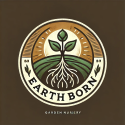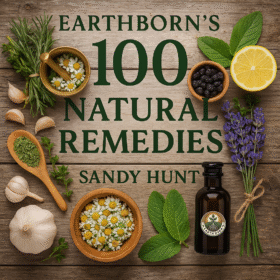
🌱 Intro
Plume Poppy (Macleaya cordata), also known as Bocconia cordata, is a tall, ornamental perennial native to China and East Asia. With its bold, blue-green leaves and tall plumes of creamy flowers, it has long been admired in traditional gardens. Historically used in Chinese folk medicine, it gained global popularity for its striking look and naturalistic aesthetic in cottage gardens and borders.
💊 Medicinal Benefits
In Traditional Chinese Medicine (TCM), Plume Poppy has been used for its anti-inflammatory, antimicrobial, and analgesic properties. The plant contains alkaloids such as sanguinarine and chelerythrine, which have shown antibacterial activity and may help in treating skin infections and wounds. However, these alkaloids are potent and potentially toxic in high doses—medicinal use should always be guided by a trained herbalist or doctor.
📅 When to Plant in South Africa
Plant Plume Poppy in early to mid-spring (September to November) for best growth. Warmer inland regions can also plant in late August.
🏡 Where to Plant
Choose a garden bed or naturalized area—Plume Poppy grows best in the ground and can spread aggressively. It’s ideal for the back of borders or as a dramatic focal plant in wildlife gardens.
🌞 Soil, Water & Sunlight Requirements
✅ Soil: Prefers well-drained, fertile soil enriched with compost. Avoid heavy clay.
✅ Sunlight: Thrives in full sun, but tolerates light shade in hotter areas.
✅ Water: Water moderately—keep the soil evenly moist but never soggy. Drought-tolerant once established.
✅ Fertilize: Use a balanced organic fertilizer every 4–6 weeks during active growth.
✅ Spacing: Allow 60–90 cm between plants—they grow wide and tall.
✅ Seeds germinate: Germinate in 3–5 weeks at temperatures of 20–24°C.
✅ Transplanting: Transplant seedlings when they are 6–8 weeks old or 10–15 cm tall.
✅ Maturity height: Reaches 1.5–2.5 meters tall at maturity.
🍓 Flowers & Fruit
From mid-summer to early autumn, Plume Poppy sends up delicate, creamy-white to pinkish panicles. These fluffy plumes can reach up to 30 cm long. Though not fruit-bearing in the typical sense, the seed capsules dry beautifully for arrangements.
🌼 Companion Plants
Pair with tall, hardy perennials like Russian Sage, Lavender, Echinacea (Coneflower), Rudbeckia, and Yarrow for a layered, pollinator-friendly garden.
🐛 Common Pests
Watch for aphids, slugs, and caterpillars, especially on young shoots. Use neem oil or introduce beneficial insects like ladybugs.
🧺 Harvesting
Harvest leaves or roots in autumn of the second year, when alkaloid content is highest. Use gloves and sterilized tools.
🫙 Storage
Dry leaves or roots in a shaded, ventilated area. Store in airtight glass jars away from light and moisture. Label clearly due to toxicity.
🧪 How to Use as Medicine
Traditionally used as a topical treatment for skin infections:
• Antimicrobial Wash – Simmer 1 tbsp dried leaf in 500 ml water for 10 min. Cool and apply with a clean cloth.
Note: Internal use is discouraged due to toxicity risk.
🎉 Fun Fact
Plume Poppy leaves look like giant maple leaves, adding bold texture to gardens. Despite its elegance, it’s technically part of the poppy family—yet unlike true poppies, it doesn’t produce showy blooms.
⚠️ Caution
All parts of the plant are toxic if ingested in large amounts. Can cause skin irritation—wear gloves when handling. Avoid use during pregnancy, breastfeeding, or if you have liver conditions.
📣 Call to Action
Add a wild, architectural flair to your garden this spring with Plume Poppy! It’s a conversation starter, pollinator magnet, and offers potential herbal value when used with care. Grow responsibly and enjoy its majestic beauty.


 **Meet Sprout!** Sprout is your friendly gardening companion at Earthborn, always ready with helpful advice on plant care, medicinal herbs, and natural gardening solutions. From seedling to harvest, Sprout provides expert guidance to nurture your garden and your well-being—making gardening easy, fun, and naturally rewarding.
**Meet Sprout!** Sprout is your friendly gardening companion at Earthborn, always ready with helpful advice on plant care, medicinal herbs, and natural gardening solutions. From seedling to harvest, Sprout provides expert guidance to nurture your garden and your well-being—making gardening easy, fun, and naturally rewarding.
